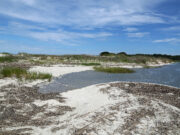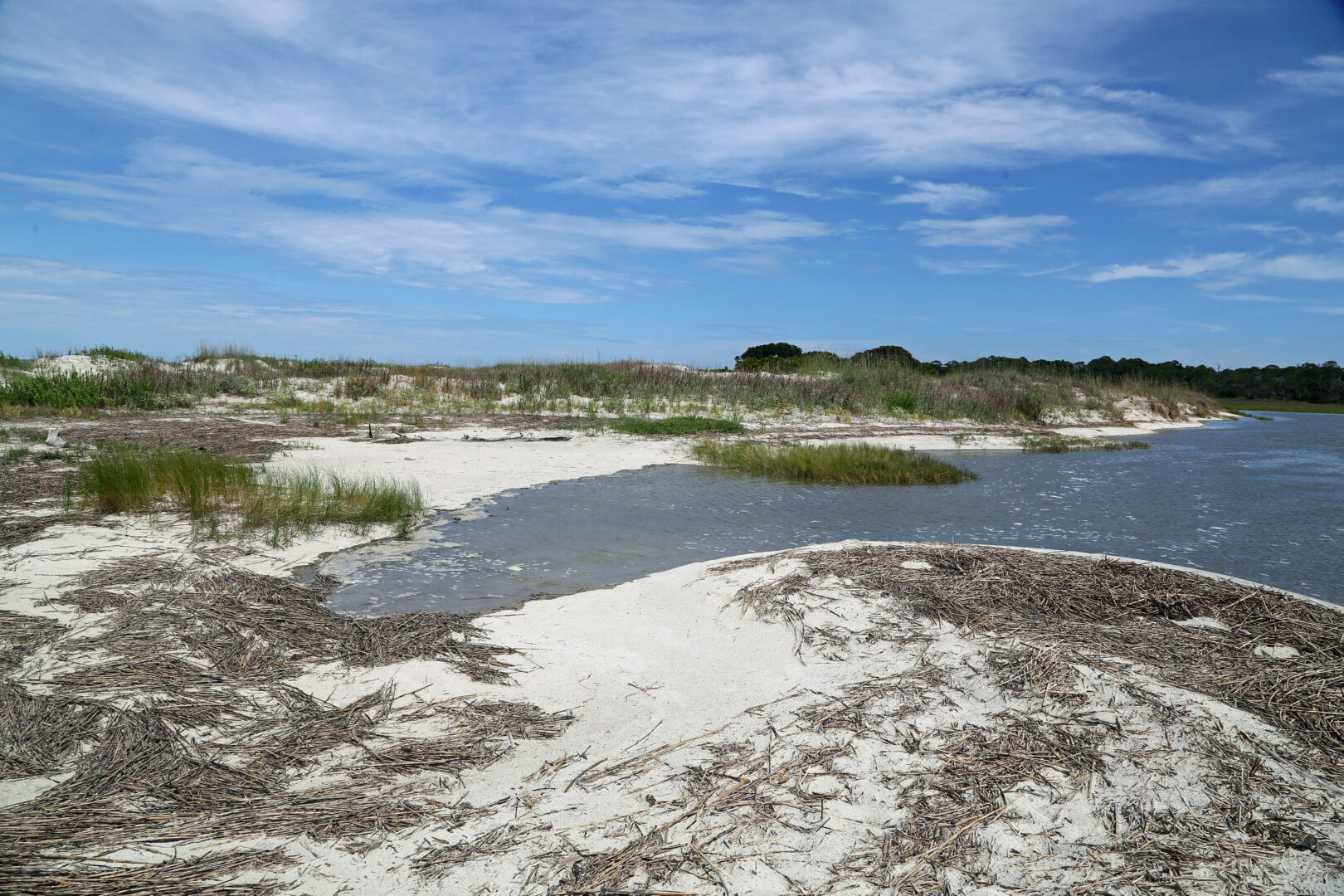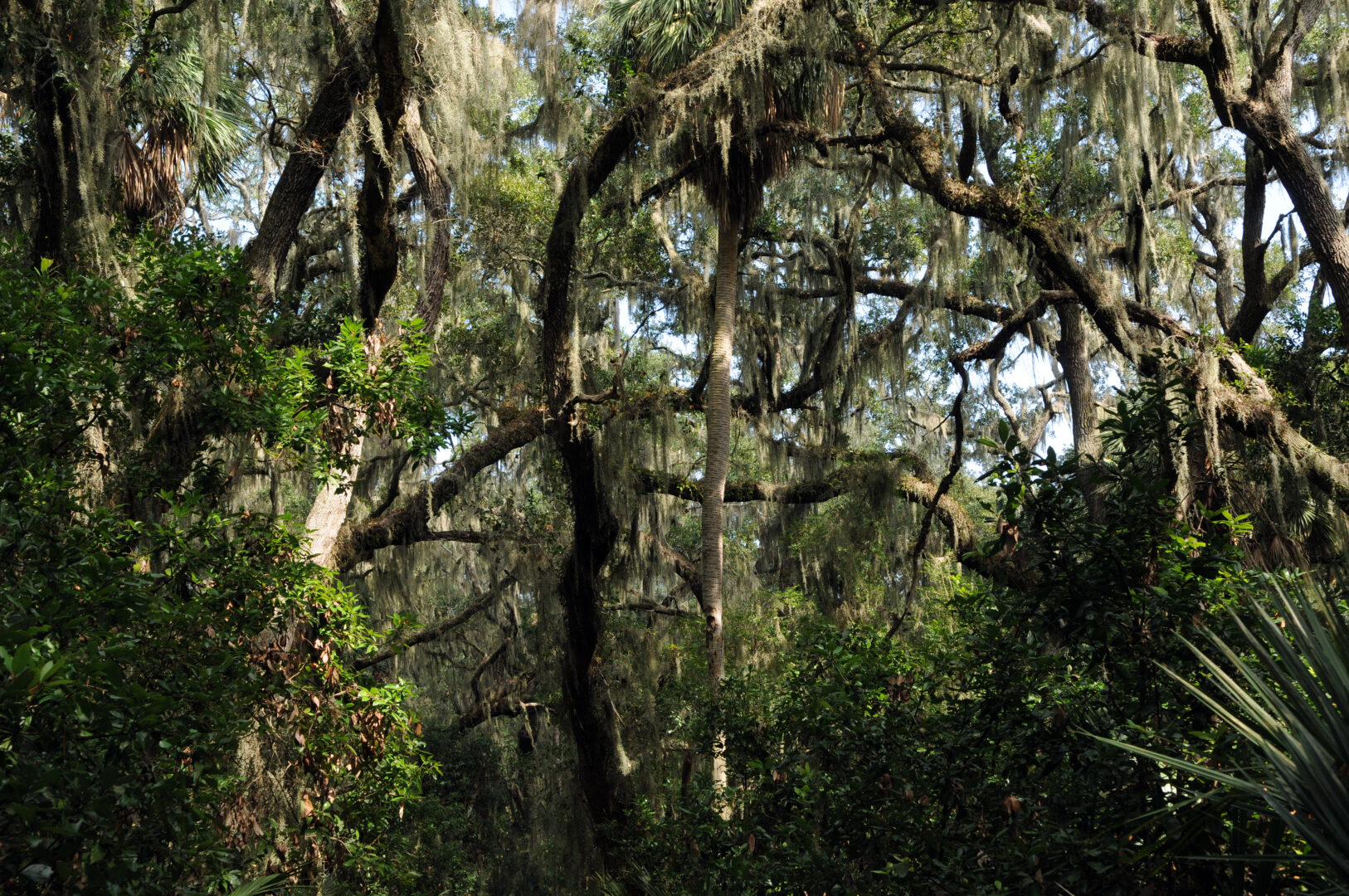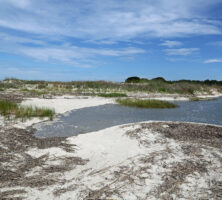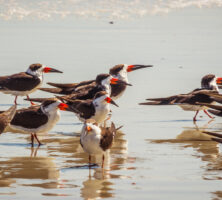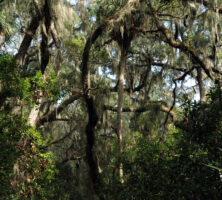Of all Georgia’s coastal barrier islands, Wassaw Island is the least disturbed by human intervention. Only Fort Morgan, constructed during the Spanish-American War (1898), and a small housing compound have been built there since colonial times.
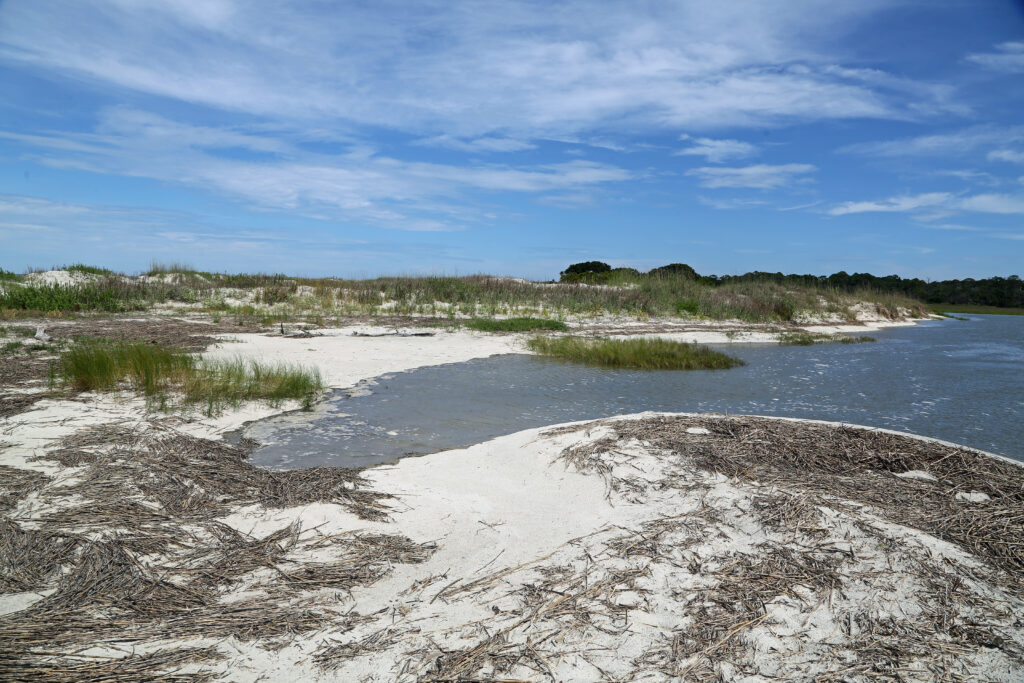
Unlike Georgia’s other barrier islands, Wassaw Island’s forests were never cleared for timber, cotton, or cattle. The island today is said to be the best representation of what Georgia’s barrier islands looked like before Europeans arrived. Since 1969 Wassaw has been a national wildlife refuge and recognized as a prime sanctuary for migratory birds and nesting loggerhead sea turtles.
Wassaw lies southeast of the geologically older Skidaway Island in Chatham County. About five and a half miles long and up to two miles wide, Wassaw has about six miles of deserted ocean beach.
Wassaw’s total of 10,050 acres includes surrounding tidal marshes, two smaller islands (collectively known as Little Wassaw Island), and several small hammocks. Together, they make up the Wassaw Island National Wildlife Refuge. More than 70 percent of the entire complex is composed of tidal salt marsh. The rest consists of maritime forest, dunes, mudflats, and sandy beach.
The island’s name is derived from the Creek word wiso (pronounced WEE-so), meaning sassafras, which still grows on the island. Sixteenth-century French traders came to Georgia’s coastal islands to ship large quantities of sassafras back to Europe, where the plant was used to make a highly popular medicinal tea.
Geologic History
Wassaw is a very young island geologically. It formed about 1,600 years ago in the current Holocene epoch. Its main topographic feature is a centrally located dune ridge, which runs the length of the island and reaches elevations of forty-five feet above sea level at the south end.
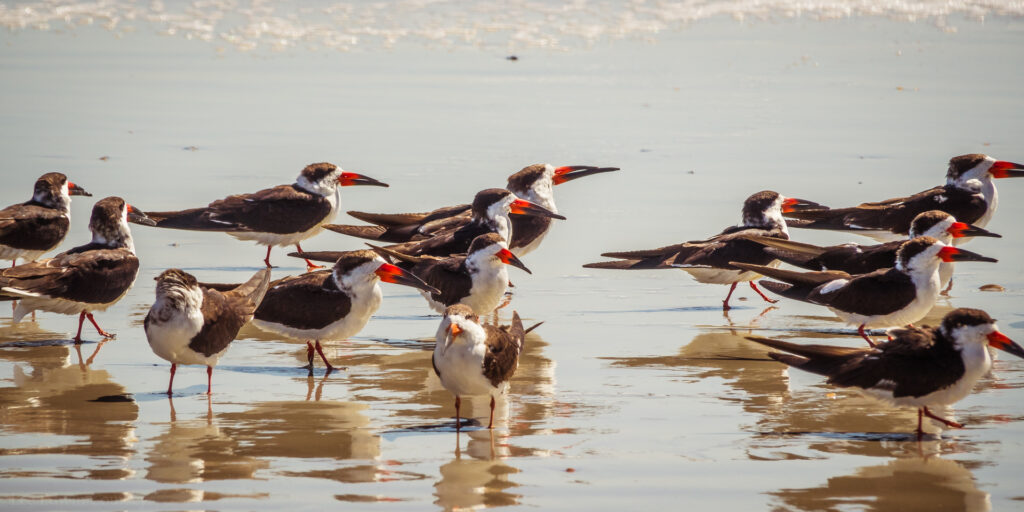
The oceanfront beach is characterized by an eroding shoreline along its northern end. Where erosion of forested upland is occurring, the beach is littered with the sun-bleached skeletons of cedar, oak, palmetto, and pinein what is known as a “boneyard beach.” The remainder of the beach is backed by sand dunes. In particular, Wassaw’s southeastern tip shows evidence of rapid accretion, or sand buildup, with a series of several dune ridges—the positions of former shorelines—parallel to the present shoreline.
The pattern of erosion on the north end and accretion on the south end is typical of several Georgia coastal islands. As a result, the whole of Wassaw Island appears to have shifted, rotating counterclockwise over the past century.
Human History
Human activity and impact on Wassaw has been minimal. Native Americans apparently used the island for hunting fish, fowl, reptiles, and shellfish. Indian artifacts dating to A.D. 500-600 have been found on the island.
In 1846 a cholera epidemic prompted white authorities to send 300 enslaved people from Liberty County to Wassaw to help them avoid the disease. Eleven enslaved by Anthony Odingsell, a black planter who also owned Little Wassaw Island, were probably among those sent to the island. Records show, however, that most of those sent died on the island and were buried there. The location of their graves is unknown.
During the Civil War (1861-65) the island was occupied first by Confederate and then by Union troops.
In 1866 George Parsons, a wealthy businessman from Kennebunk, Maine, purchased Wassaw, Little Wassaw, and the surrounding salt marshes. Parsons constructed about twenty miles of interior roads on the island, as well as a housing compound for his family and friends.
During the Spanish-American War (1898), a group of civilians under the supervision of the U.S. Army Corps of Engineers built a fort on Wassaw’s north end to protect the southern approach to Savannah, by way of the Wilmington River, from Spanish attack. Fort Morgan, built with concrete, tabby, and north Georgia granite, was equipped with two 4.7-inch rapid-fire guns. It was the largest single fortification built in Georgia specifically for the Spanish-American War. Today, only a part of the fort still exists, and those remnants are threatened by erosion.
The Parsons family and others in 1930 formed the Wassaw Island Trust to preserve the island in its natural state. In the 1960s the trustees, fearing that the state of Georgia might condemn the island and open it to public use or development, negotiated with the U.S. Fish and Wildlife Service to convey Wassaw to the United States for permanent preservation as a natural area. In the 1969 transaction, the Wassaw Island Trust sold Wassaw to the Nature Conservancy of Georgia for the bargain price of $1 million. A 180-acre portion in the center of the island, including the Parsons’ housing compound, was retained by the family and the trustees for their personal use.
Shortly after the transaction, the Nature Conservancy sold the island for the same amount to the federal government. Today, the island is managed by the U.S. Fish and Wildlife Service as a national wildlife refuge. The service maintains a dock and small headquarters on Wassaw Creek. The refuge is open only to daylight visitors; no development is allowed.
Biological Resources
Wassaw’s forest harbors rare old-growth stands of cedar, oak, and pine, along with cabbage palm, holly, and magnolia. A variety of other habitats on Wassaw, including the tidal marshes, sandy beach, dune systems, and freshwater sloughs between the dunes, support an abundance of wildlife species.
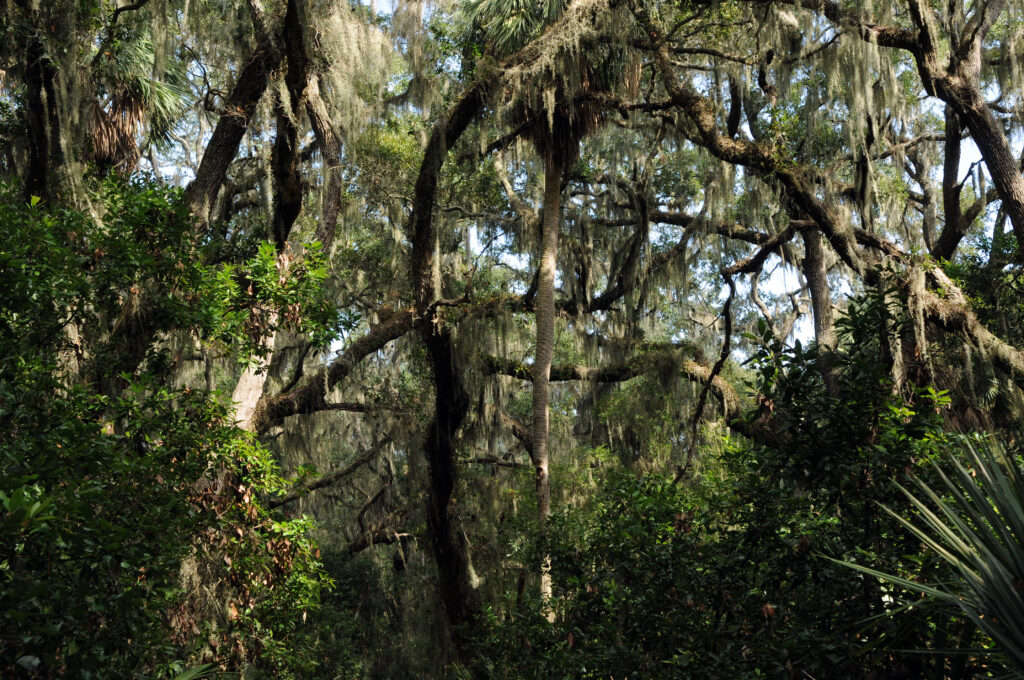
More than 200 bird species have been identified on Wassaw, which is home to large rookeries for egrets, herons, and other wading birds. The freshwater sloughs and ponds are home to dozens of alligators. Waterfowl such as mallards, mergansers, and wigeons also use the ponds during fall and winter. Southern bald eagles and osprey nest on the island, as do American oystercatchers, plovers, and terns.
Bottle-nosed dolphins are common in the waters around Wassaw. Beginning around April of each year, Wassaw’s dark, deserted beach provides ideal nesting sites for threatened loggerhead sea turtles. More than eighty loggerheads nest each year on Wassaw.


